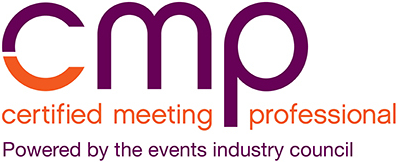5 Trends Shaping the Events Industry
![]() Print this Article | Send to Colleague
Print this Article | Send to Colleague
What keeps you up at night? For professionals in the events industry, it’s a question that could prompt a myriad of different responses.
In fact, it is a question that was posed to the Events Industry Council's Council of Delegates, who are CEOs of more than 30 of the leading-industry associations. Those associations represent more than 103,500 individuals and 19,500 firms and properties involved in the meetings, conventions and exhibitions industry. What resulted was a riveting discussion on the changing nature of the industry, the emergence of new tech trends and even the current state of political affairs.
While the specific concerns going forward varied, what ultimately emerged were five key trends that event professionals should watch closely in the year ahead.
1. Safety & Security: From natural disasters to acts of terrorism, risk management is a topic that weighs heavy on the minds of many. Given the state of national security around the globe, it is imperative that the event industry concentrates on efforts to ensure the safety of attendees. In this regard, one Events Industry Council member, the International Association for Venue Managers is currently developing a safety and security designation and guidelines for convention centers to meet Department of Homeland Security accreditation. In addition, the Events Industry Council’s own APEX initiative has formed a work group to develop additional resources for meeting professionals to become more educated and proactive on safety issues.
2. Workforce Issues: The challenge of finding employees with the right set of soft skills to work with customers is one that seems to be evergreen. And as millennials become the largest generation in the U.S. labor force, that challenge accelerates as these individuals carry with them a high level of personal expectations and different learning styles. Those who can effectively match such expectations will be rewarded with highly engaged and upwardly mobile employees.
3. Advancing the Event Profession: The fear of declining relevance is constant, as is the ability to provide consistent ROI. Those looking to take this profession to a new level are looking at a range of different solutions, from artificial intelligence to augmented reality. While technology can appear to be pulling people away from personal connections and face-to-face interactions, these tools do change the way people consume content and engage with others. Those who can effectively strike the right balance will help advance the profession.
4. The Impact of U.S. Political Climate: Here are a few questions to ponder: What effect does the global perception of the Unites States have on meeting attendees and delegates? And in what ways do legislative action within the U.S. impact where meetings are held and who attends them? These are two very real concerns for event professionals, not just in the U.S. but globally, showcasing the fact that now, perhaps more so than ever before, the political landscape will have a heavy influence on event planning.
5. Mergers & Acquisitions: The business landscape in general continues to experience heavy merger and acquisition activity – a trend to which the events industry is not immune. Across the board, M&A activity continues to consolidate major players in the space – and the impact could be broad-based. For example, some members noted the fact that M&A activity continues to reduce membership within organizations, which could ultimately impact how events are planned and executed.
These industry changes occur on a massive scale, and professionals must sail through them in order to stay afloat, whether or not they feel totally on board with the changes. It can be helpful to step back and take a big-picture look at the current state of the industry by focusing on current trends and future directions, so that you are better equipped to predict which ways the wind will blow.

